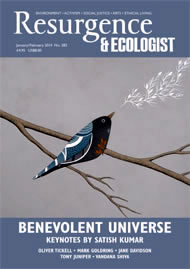Although described as “a book about science, culture and soil, viewed from the perspective of one family living in England in the Midlands over the past hundred years or so”, this book is so much more.
Comprising 40 short essays in rough chronological order, it takes the reader through some of the biggest global landmarks in agriculture and their effect as viewed from the local level.
It’s the story of how we have come to understand soil as seen through the eyes of three generations of farmers working a family farm in Warwickshire. As such it’s as much a technical document as an oral history of the ground beneath our feet.
While the essay format of the book invites the reader to dip in and out, you will get much more out of the story if you begin at the beginning. Context is everything in the story of soil. What is more, Martin Wood, an agricultural consultant and a founder of Earthcare, has an easy writing style that helps move the story along.
What is both revealing and discouraging is that many of the same issues we face now – a growing population, the need to feed more people, the need to conserve natural resources – were just as pressing in the times of Wood’s ancestors as they are today.
Soil is vital to the national economy and the health and wellbeing of society. Protecting it so that it can continue to feed us requires a long-term perspective and a sense that we have a relationship with soil, not dominion over it.
Yet many of the solutions to these problems – from the great enclosure that severed the populace from the land, to artificial fertilisers, to mechanical ploughs, to modern pesticides – are built on the principle of short-term gain. The effect on our soil has been disastrous.
Reading this book, we may shake our heads at the folly that led to the dust bowls of 1930s America, where intensive farming led to the dramatic loss of precious topsoil. Yet it wasn’t that long ago that government scientists warned that the UK has been steadily degraded by 200 years of intensive farming and industrial pollution. We are currently losing more than 2 million tonnes of topsoil each year, reducing our potential to feed ourselves, increasing the risk of flooding, and undermining efforts to reduce carbon emissions.
Wood’s book traces the history of all this and more – what he calls key landmarks in the life of soil – as well as the efforts of brave souls, such as the founders of the Soil Association, the biodynamic movement, and E.F. Schumacher with his seminal book Small Is Beautiful, who have tried to bring a long-term perspective to the fore.
What becomes clear as you read is that while our soil has played an important role in our history and our prosperity, we often have not treated it with the care it deserves to ensure it remains healthy and productive.
It can be difficult to get people excited about soil – many still see it as simply dirt. But the release of this book is well-timed. There is currently a growing interest in the biology of soil, stimulated by increased concern to conserve natural resources, not only in agriculture, but also in natural ecosystems. And much of this interest centres around ‘manipulating’ soil organisms to make our soil more productive.
One wonders, though, whether we have done enough manipulating for the time being and whether we ought to try understanding and revering it more first. For those who see the sense in that approach, this small book is a very good start.







